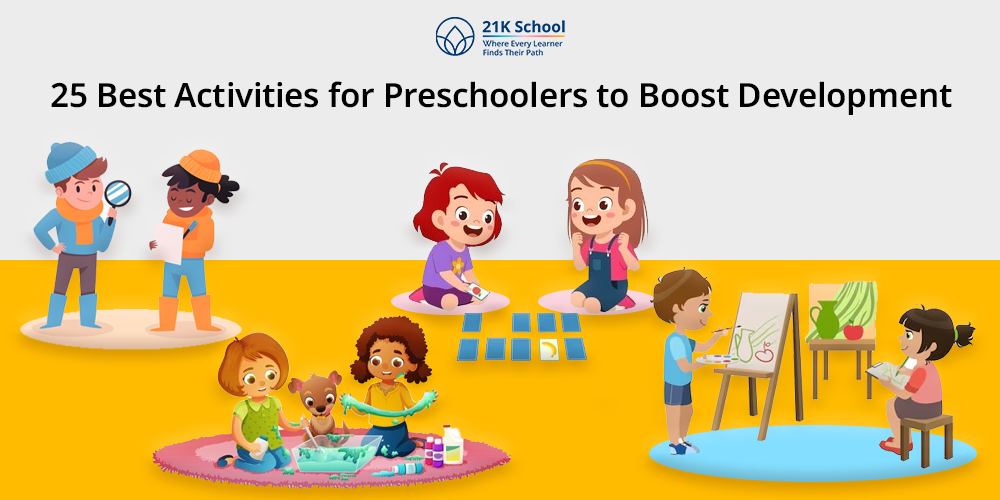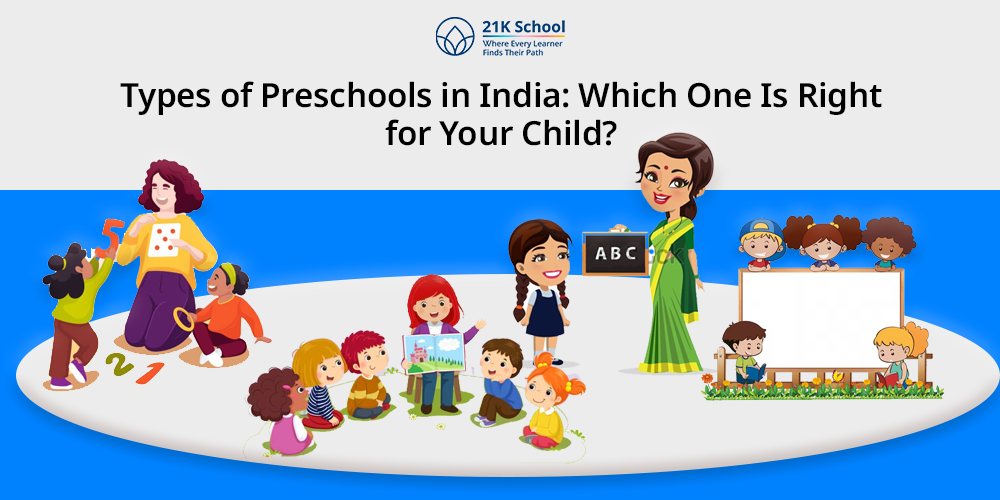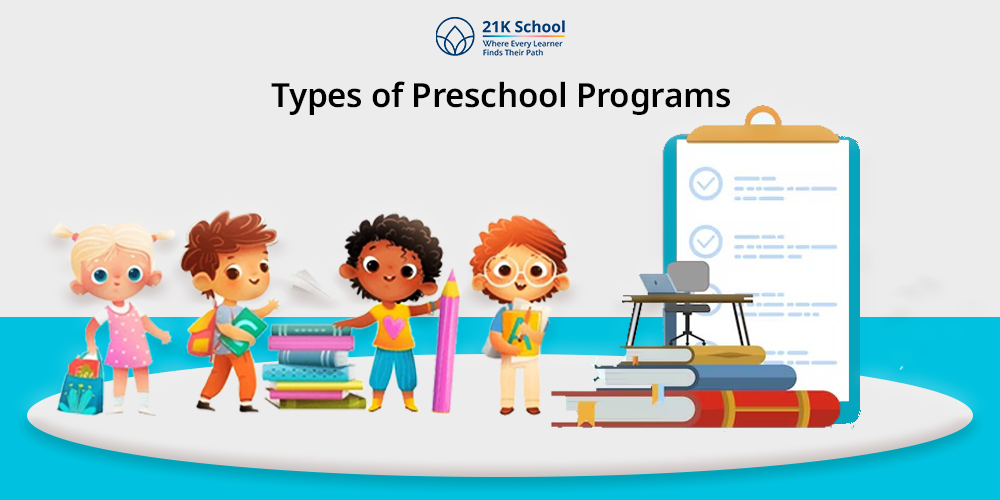
Ever wondered ?
What is a better option, traditional high schools or online high school?
Ofc we all have considered online school at least once for ourselves.
We are all well aware of the traditional high schools that have been around for centuries now but , what are online high schools?
Online high schools are a transformed way of learning for everyone around, where students receive education in a more flexible way and in an inclusive learning environment — it’s a modern approach to education. Although there are some challenges and benefits to inclusive learning.
The advancement of learning forums over the internet has greatly impacted the field of education for learners, especially in that it has made them more achievable for the various audiences or students and given them the opportunity to excel academically as well as personally from the convenience of their own home.
Further, Let’s get straight into the matter: studying about the benefits of high school education in an online dynamic.
Contents
Benefits of Online High School
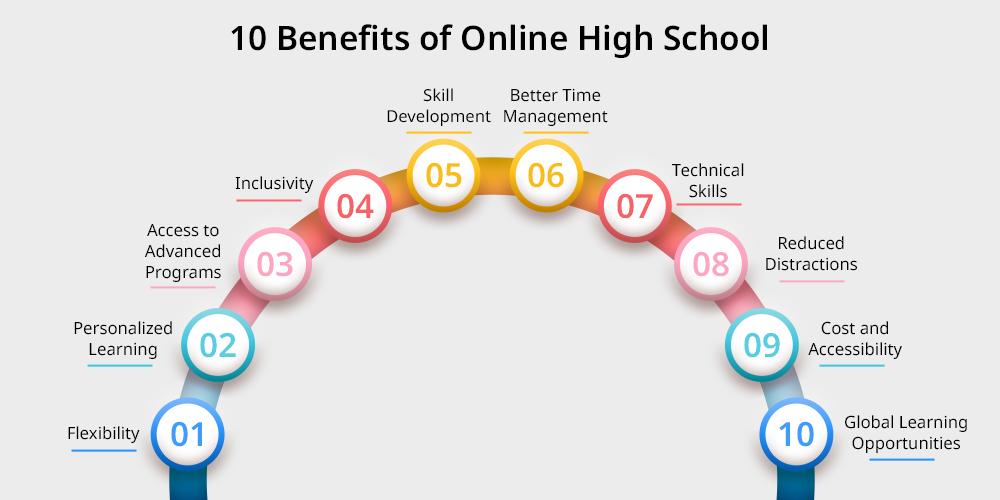
1. Flexibility

Online schooling promotes flexibility, where students can customise their learning schedules as per their convenience and that personalisation can even be tailored to fit into their family and personal commitments — it is one of the most significant benefits that online high school can offer.
One who has opted for online high school can easily strike a balance between academics and other co-curricular activities like; arts, sports and even go for a part-time job. This form of education provides freedom to learn at one’s own pace and convenience.
This flexibility in learning is very important, as this helps students maintain a healthy balance between their studies and other commitments that have been made, for their advancements (like co-curricular activities) , even responsibilities — this creates a stress-free learning environment for students, where they grow best.
2. Personalized Learning
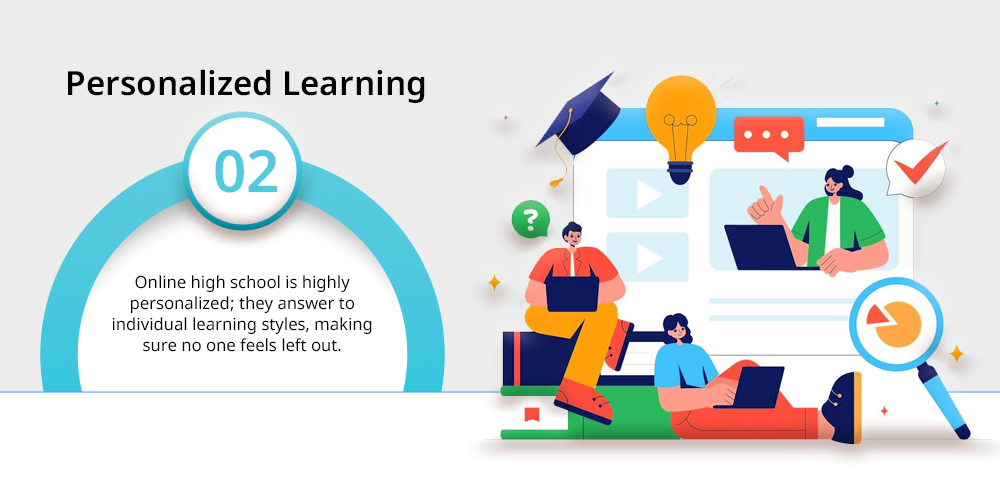
Unlike traditional classrooms, online high school is highly personalized; they answer to individual learning styles, making sure no one feels left out. This allows students to proceed ahead in their educational journey at their own pace.
Advanced learners get a chance to move through their subjects quickly, while slow learners and soakers can take extra time to cover up the concept and proceed at a much slower pace than that of a last learner.
Many schools and institutions use adaptive technological learning tools and analytics to tailor the lesson for their students keeping in mind and considering all their strengths and weaknesses.
Now, it is crucial to understand that this personalization helps students in their learning process by enhancing their understanding and boosting their knowledge retention — making their learning experience more effective.
Further to know more about personalised learning read: Personalised Learning: Introducing Success in the Modern Classroom
3. Access to Advanced Programs
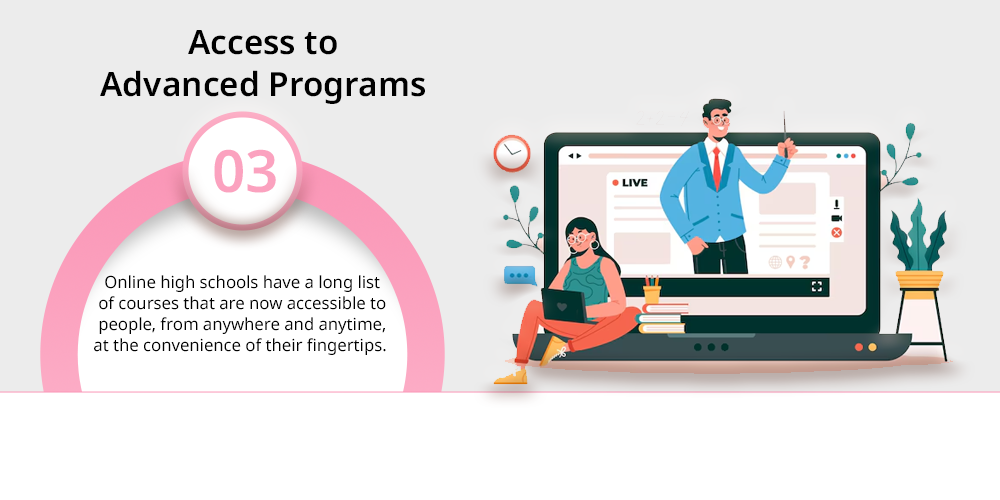
Online high schools have a long list of courses that are now accessible to people, from anywhere and anytime, at the convenience of their fingertips.
One of the most renowned courses are Advanced Placement (AP) programs, there are also some like; college prep classes, online counselling, skill based courses and specialized subjects courses, which are not commonly available in traditional schools — though there are some exceptions, and schools offer the same undoubtedly.
Online higher education is a great opportunity for students interested in STEM, arts, or other fields, where they can explore advanced topics over the curriculum and prepare for higher education or advanced career opportunities — it’s like an overall package for students seeking time for themselves and their career.
These programs expand to various horizons of life and not only stick to academic benefits like the traditional models of education.
The access to advanced programs allow students to earn college credits and aim higher while being in high school — promoting holistic development.
4. Inclusivity
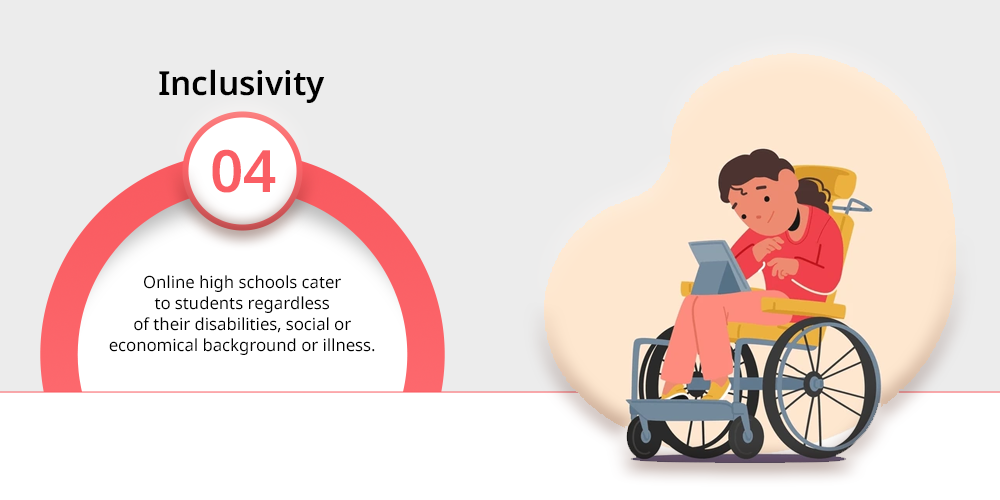
Inclusivity and online high schools go hand in hand.
Online high schools cater to students regardless of their disabilities, social or economical background or illness, it tries to create an environment that is supportive for learners and a place where students can learn comfortably without being conscious of their existence.
Additionally, inclusive education promotes cultural understanding as students from different geographical backgrounds and locations including the remote and underserved areas interact and collaborate with each other for quality education, without relocating and facing any logistical barriers – this promotes global awareness and understanding.
This inclusivity makes students more sensible and sensitive towards society.
5. Skill Development

We all know that skills are important, and so are skill based learning opportunities.
Which is not really easily accessible, but virtual learning platforms can help students with that.
Online learning environment facilitates time-savings, and this gives them enough time to focus on themselves .
Attending online classes helps students develop essential skills that go beyond tiger classroom teachings and academics.
With this being introduced students learn several skills like :
Skill to Manage their own schedules – time management and self discipline
Skills to navigate through digital platforms — technical skills; it is very important to understand how technology can support students’ success.
virtual interactions with teachers and peers contributes to their Communication skills
By taking charge of their learning journey and overcoming challenges independently, they strengthen their — problem-solving and critical thinking abilities.
6. Better Time Management
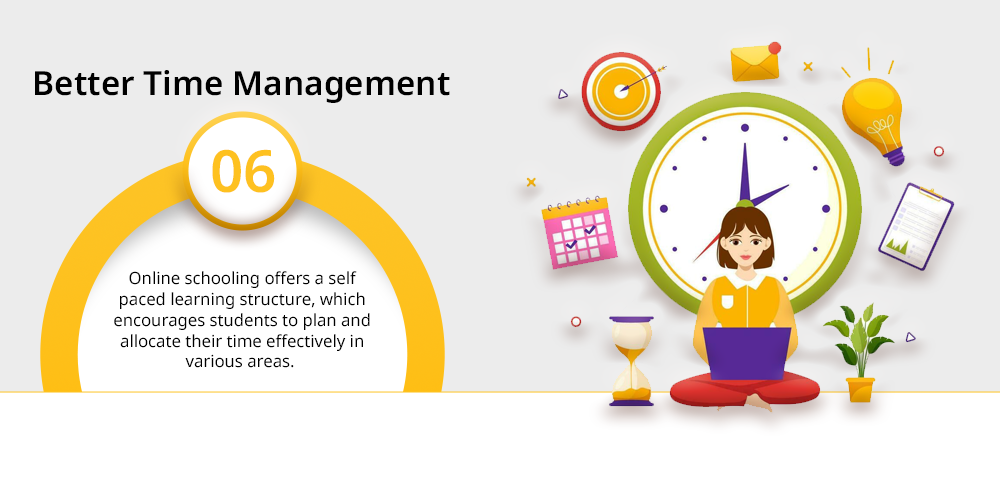
Online schooling offers a self paced learning structure, which encourages students to plan and allocate their time effectively in various areas.
And it’s very different from traditional schools, where we had fixed schedules. Also, in an online set up students can choose when to focus and consider which subject or assignments — giving them full authority and freedom for their own learning journey.
This freedom feeds them with a sense of responsibility and that inspires them to be more efficient and responsible with time, where this continuous practice prepares students for future endeavors where time management plays a crucial role.
7. Technical Skills

Everything is online — thus, everything is technical.
Now if we look at it from a student’s perspective proficiency with technology is very important and should not be ignored.
Online high schools require students to use various digital tools and platforms, such as learning management systems, video conferencing software, and collaborative applications.
There are many such platforms that students can leverage to study from, and with time as students use so many platforms they are so technologically aware they tend to develop technological skills.
The skills that help them ace their future endeavours, these experiences help students become a pro at using technology, a skill that is invaluable in higher education and the modern workforce.
8. Reduced Distractions
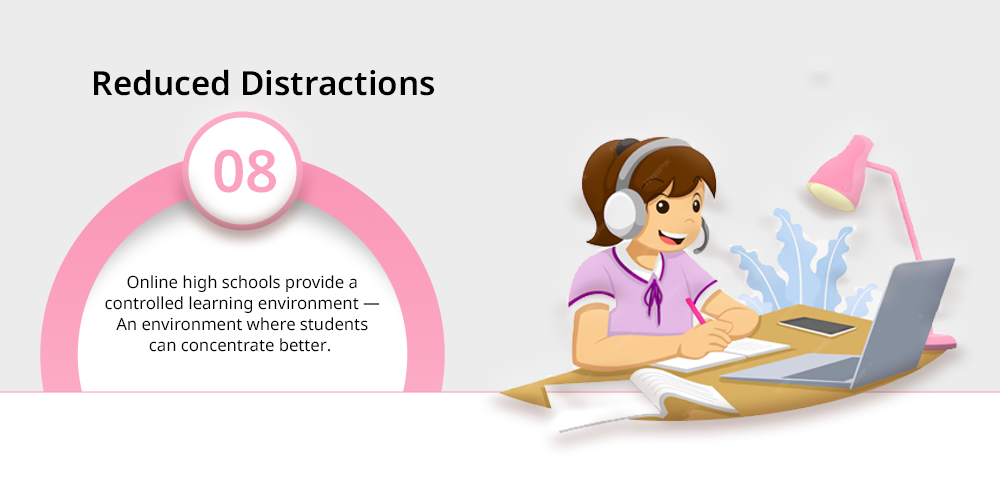
Traditional classroom settings are overwhelming.
It has distractions from all sides: peer distractions and external pressures, even the pressure of sticking to one schedule and the rigid curriculum, these distractions and problems affect focus.
Online high schools provide a controlled learning environment — An environment where students can concentrate better.
Online set up has a comfort of home where there are fewer disruptions, students are more likely to stay engaged with the classroom activity and stay motivated for a longer time, leading to improved academic outcomes and overall well-being.
9. Cost and Accessibility
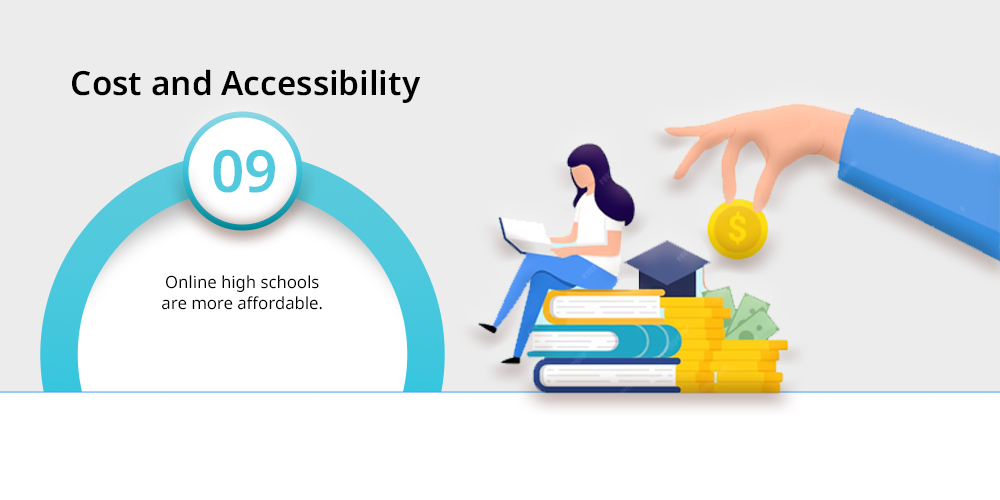
Traditional schools are financially draining.
Online high schools are more affordable. As they eliminate the expense of community, uniforms and physical textbooks — making education more accessible and cost efficient for people across all demographics.
Additionally, it only requires one time investment in buying the technological gadget required for online classes, mainly gadgets like; phone, laptop, internet connection and in some cases extended camera.
This ensures that students from any geographical or demographic background can access course materials and lectures from anywhere with an internet connection — breaking down geographical barriers and ensuring equal opportunities for learners worldwide.
10. Global Learning Opportunities
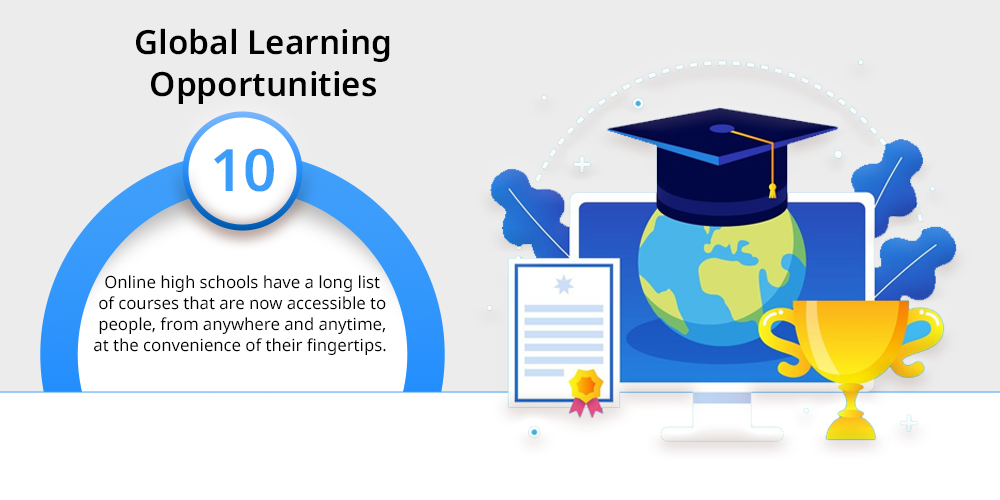
Online high schools offer students access to global networks and create an environment for them where they can interact with peers, teachers and avail resources globally — making it a truly international experience.
Unlike traditional learning environments schools where the interaction is limited to local level or mostly it can go to regional communities.
Online platforms allow students to communicate with people across the world, in different cultural boundaries and even crossborders. This exposure helps students in enhancing their communication skill and prepare for the challenges as they foresee the common practices of the world.
These practices help students gain an insight into the global issues and standards for people, cultivating a culture of innovation and collaboration among them — making them ready for the future world that is multicultural and dynamic.
Academic and Career Advantages of Online High School
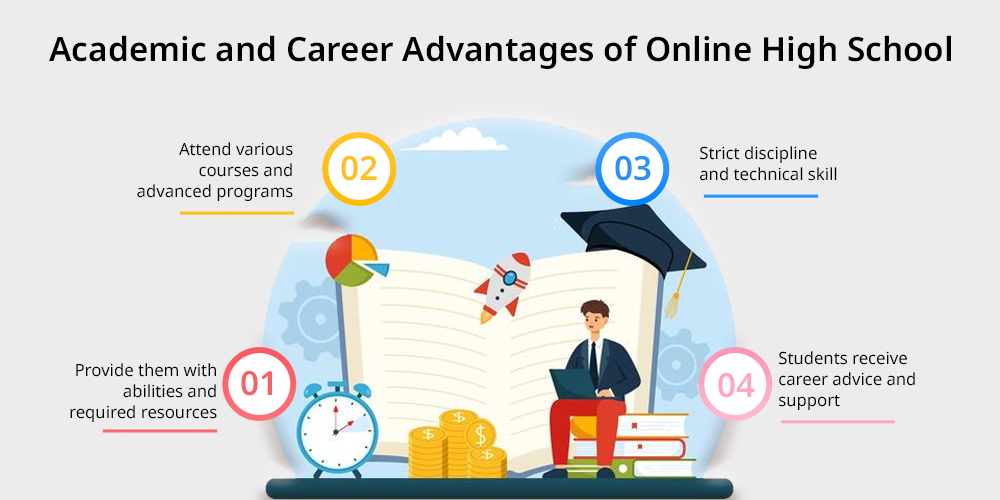
Online High schools for students provide them with abilities and required resources for them to succeed in every class and at work — it’s like balancing it all but with a lot more ease and comfort.
They benefit students’ learning needs and allow them to excel in exams while affording them mastery of their study material.
Online high school enables students to attend various courses and advanced programs to prepare for college admission while the strict discipline and technical skill makes them employers’ desired employees.
In addition, students in online schools receive career advice and support, thus have opportunities to connect their learning to their future careers — making it the best choice for students seeking opportunities that help them grow.
Conclusion
As we conclude, it is important to understand both the education formats have their own pros and cons but, certainly for students in this dynamic and competitive environment it is important to compare every possible option available to make a more informed and confident decision.
Online higher secondary schools have actually transformed education by providing efficiency, access, and quality learning education systems — it’s the need of the hour.
Online higher education is a commitment to the world that thrives on technology that will keep enhancing and getting advanced with time, this will keep getting better and better.
At, 21K School learning platform provides a seamless, tech-driven learning experience.
With features such as progress tracking, on-demand access to materials, and interactive tools, our learners and expert faculty are always supported. The platform’s ease of use provides a holistic learning experience.

